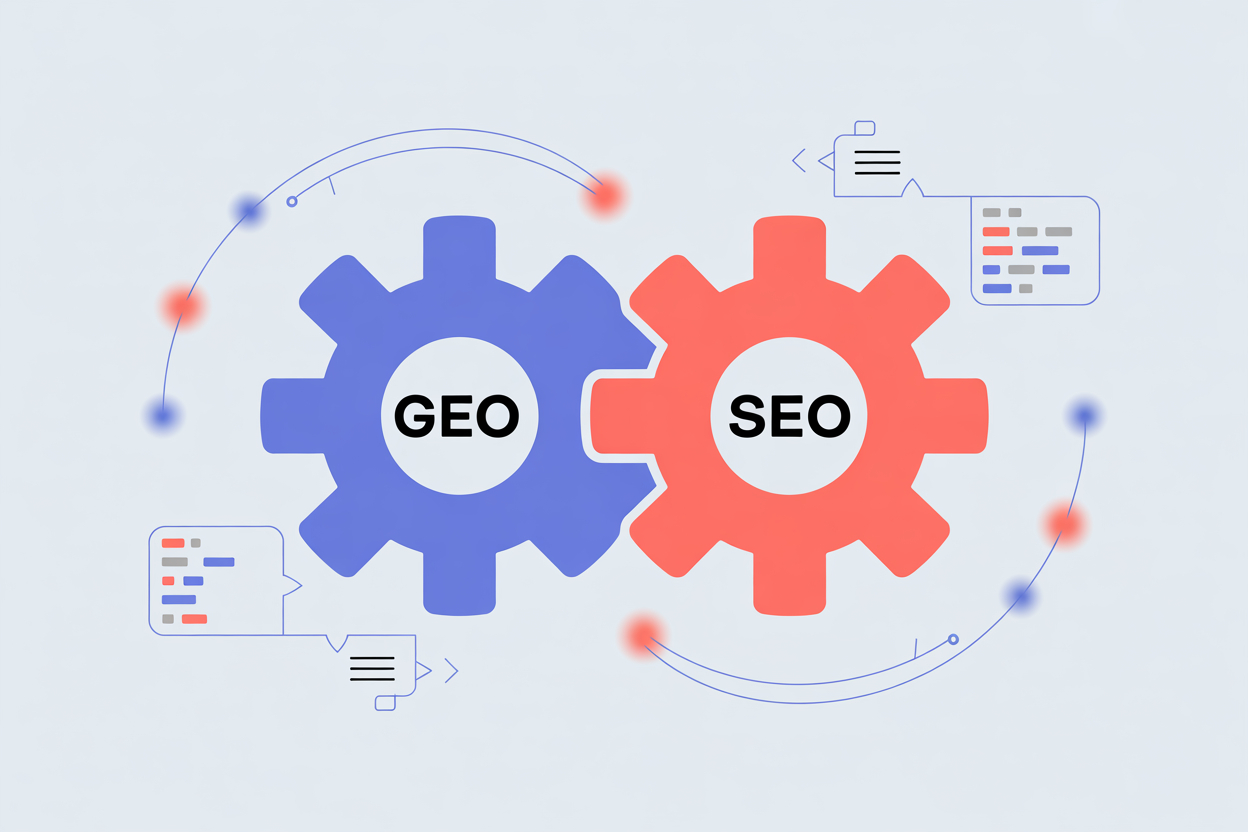GEO vs SEO: Why Modern Visibility Needs Dual Optimization
GEO vs SEO
The way people search online is changing faster than ever. A few years ago, tools like ChatGPT and Google Gemini were only experiments. Today, millions of people use them to start research or make buying decisions.
Therefore, the discussion around Generative Engine Optimization (GEO) vs Search Engine Optimization (SEO) has become more important than ever.
Traditional SEO marketing alone is no longer enough. Even if your website ranks high on Google, it might not appear in AI-generated answers. As a result, GEO has become essential to keep your business visible across both search engines and AI tools.
SEO: The Foundation of Search Engine Optimization
SEO (Search Engine Optimization) helps websites rank higher on Google, Bing, and other search engines.
Goal: The goal is to attract organic traffic by appearing at the top of search results.
How it works: Search engines crawl websites, analyze content, and index them based on quality, keywords, backlinks, and user experience. In other words, SEO rewards websites that offer value and perform well technically.
Key Strategies: Include keyword research, technical SEO (such as mobile optimization and site speed), and off-page SEO (like link building).
In addition, SEO success is measured by metrics such as keyword rankings, organic traffic, and click-through rate (CTR). A trusted SEO company can help you grow visibility and bring more visitors to your website.
GEO: Optimizing for AI-Generated Answers
Generative Engine Optimization (GEO) ensures that your content appears or is cited in AI-generated summaries from ChatGPT, Google’s AI Overviews, or Gemini.
Goal: To make your brand visible in AI-generated responses.
How it works: AI tools collect data from trusted, structured, and verified sources. Therefore, content that is clear, factual, and well-organized has a better chance of being cited.
Key Strategies: Focus on clarity, structure (use headings and bullet points), credible sources, and updated information. Moreover, use schema markup like FAQs or How-To to make your data AI-readable.
GEO performance is measured through brand mentions, AI citations, and overall AI visibility — often referred to as visibility economics.
GEO vs SEO: A Quick Comparison
| Aspect | SEO (Search Engine Optimization) | GEO (Generative Engine Optimization) |
|---|---|---|
| Goal | Rank web pages and get clicks. | Get cited or mentioned in AI-generated answers. |
| Output | List of website links. | AI-generated summaries or answers. |
| User Journey | Search → Click → Visit website. | Ask → Read AI summary (no clicks needed). |
| Metrics | Traffic, CTR, keyword rankings. | Brand mentions, AI citations, visibility. |
| Value Signal | Backlinks and authority. | Clarity, structure, and expertise. |
Why You Need Both GEO and SEO Marketing
The GEO vs SEO debate isn’t about choosing one; it’s about combining both for full visibility.
Both depend on a few key foundations:
User Intent: Understand what people are truly searching for.
Content Quality: Create useful, original, and informative content.
Trust & Authority (E-E-A-T): Expertise, credibility, and transparency build trust.
Technical Health: Ensure your website is fast, mobile-friendly, and easy to navigate.
Furthermore, GEO and SEO work together — SEO brings users to your site, while GEO keeps your brand visible in AI results.
How to Combine GEO and SEO for Maximum Reach
Structure for AI & Search: Use headings, bullet points, and schema markup (FAQ, How-To) to make your content easy for both search engines and AI systems to understand.
Diversify Your Presence: Don’t rely only on Google. Instead, optimize your content for YouTube, TikTok, Reddit, and even ChatGPT. AI tools often pull from these trusted platforms.
Measure Both: Track not just clicks and rankings but also brand mentions and citations in AI-generated summaries. In this way, you can monitor your total online visibility.
Conclusion: Stay Visible in the AI Era
Generative AI is reshaping how people find information. Therefore, to remain visible, businesses must combine Search Engine Optimization (SEO) with strong AI visibility (GEO).
Nearly 60% of online searches now end without a click because of AI summaries. Consequently, if your content isn’t optimized for GEO, you risk disappearing from AI results.
Start today: Update your top-ranking pages with clear headings, FAQs, and schema markup. Then, monitor how often your brand appears in AI answers.
In conclusion, the brands that adapt early with a balanced mix of SEO marketing and GEO strategy will continue to thrive in both search engines and AI-powered platforms.

